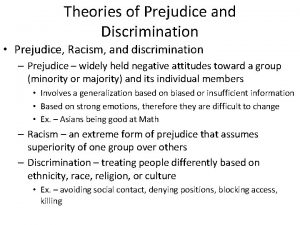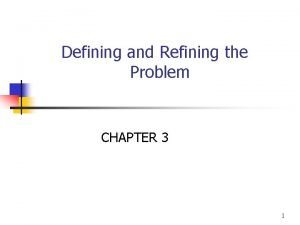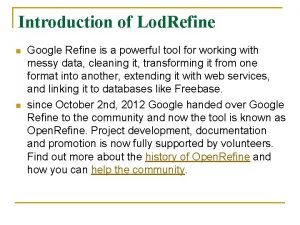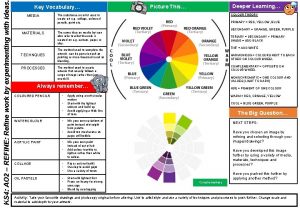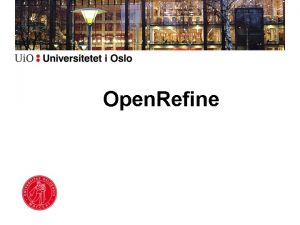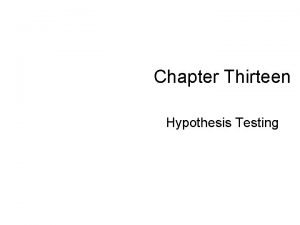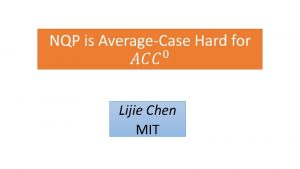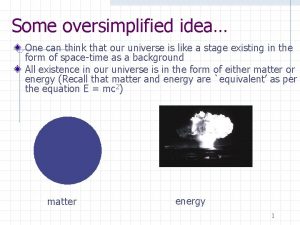The EMAN Application An Update EMAN Oversimplified Refine











![Results: Loaded Resources Exectime(uh) • • Heuristic_run Random_run 16 m 41 s [60] 9 Results: Loaded Resources Exectime(uh) • • Heuristic_run Random_run 16 m 41 s [60] 9](https://slidetodoc.com/presentation_image_h2/bb999371228c0463815c150ba5f7d95b/image-12.jpg)



- Slides: 15

The EMAN Application: An Update

EMAN Oversimplified Refine Electron Micrographs Preliminary 3 D model Particles Final 3 D model Preliminary 3 D Model

Start Parallel component proc 3 d Seq. component volume make 3 diter EMAN Refinement Process make 3 diter project 3 d proc 2 d make 3 d classalign 2 classesbymra

Recent non-EMAN Experiments • Montage workflows show value of scheduling (joint with Eva Deelman et al. )

Recent EMAN Experiments • • Experiments with Gro. EL data set (“small”, 200 MB input file replicated on all clusters) — All different grid configurations Conclusion: Significant advantage to using performance estimates, if they are accurate — Significant disadvantage to being “too smart”

Where do we go from here? • Scalability • Better heuristics • Incorporating queueing systems — Putting together a big testbed for SC 04 – ~80 nodes at UH (IA-32 + IA-64), ~60 nodes at Rice (IA-64), ~4 nodes at Baylor College of Medicine (IA-32) — Run a big calculation (with real data? ) — Problem: IP addresses can’t be permanent (at Rice) — Scheduler improvements under design (Anirban) — Performance prediction under load needed (Gabi? ) — Schedule a cluster as a cluster — Needs model of queue delay

Backup slides after this

Heuristic Workflow Scheduling: Results • • By using heuristic workflow scheduling, workflow completion times improve by an order of magnitude[>20 times] over random scheduling for heterogeneous platform Workflow completion time is within 10% of that using a very expensive AI scheduler that doesn’t scale to 2047 jobs

Heuristic Workflow Scheduling: Results • • Simulation results for workflow completion times for different “Montage” workflows Improvement of >20% for homogeneous platform Preliminary results from joint work with Ewa Deelman et. al. at USC ISI

Results with Gro. EL data • • EMAN data-set: 200 MB input file replicated on all clusters • • Used new performance models • • Ran the refinement cycle for the Gro. EL data using the new version of EMAN Testbed: 6 nodes [i 2 -53 to 58] on the Uo. H mckinley cluster and 7 nodes [torc 1 - torc 7] on the Utk torc cluster Analyzed results of makespan length for the most computationally intensive step in the workflow : classesbymra [clsbymra] Compared heuristic scheduling using performance models with random scheduling

Results: Unloaded Resources Heuristic_run 1 Heuristic_run 2 Random_run 1 Random_run 2 12 m 45 s [38] 12 m 40 s [38] 5 m 22 s [15] 6 m 44 s [19] Exectime(utk) 11 m 50 s [60] 11 m 45 s [60] 15 m 39 s [83] 15 m 58 s [79] Makespan 12 m 40 s 15 m 39 s Exectime(uh) • • 12 m 45 s 15 m 58 s Used 2 nodes [i 2 -55 to 56] on mckinley cluster and 7 nodes [torc 1 torc 7] on the torc cluster The number in the braces after execution times indicate the number of clsbymra instances mapped to the site rank[clsbymra_i][UH_mc_j]=7. 60; rank[clsbymra_i][Utk_mc_j]=16. 37 Conclusion: Very accurate relative performance models on different heterogeneous platforms combined with heuristic scheduling result in near optimal load balance of the clsbymra instances when the grid resources are relatively unloaded [dedicated resources]
![Results Loaded Resources Exectimeuh Heuristicrun Randomrun 16 m 41 s 60 9 Results: Loaded Resources Exectime(uh) • • Heuristic_run Random_run 16 m 41 s [60] 9](https://slidetodoc.com/presentation_image_h2/bb999371228c0463815c150ba5f7d95b/image-12.jpg)
Results: Loaded Resources Exectime(uh) • • Heuristic_run Random_run 16 m 41 s [60] 9 m 38 s [44] Exectime(utk) 7 m 51 s [38] 10 m 28 s [54] Makespan 10 m 28 s 16 m 41 s Used 5 nodes [i 2 -54 to 57] on mckinley cluster and 7 nodes [torc 1 torc 7] on the torc cluster; i 2 -54 to 57 were highly loaded; torcs not loaded rank[clsbymra_i][UH_mc_j]=7. 60; rank[clsbymra_i][Utk_mc_j]=16. 37 Uneven load balance due to loading of the uh machines Conclusion: Performance model based scheduling works only when the underlying set of resources are reliable [or advanced reserved]. NWS predictions may not be enough.

Results: Inaccurate Performance Models Exectime(uh) Heuristic_run 1 Heuristic_run 2 Random_run 1 Random_run 2 21 m 10 s [77] 21 m 29 s [77] 6 m 5 s [49] 4 m 44 s [41] Exectime(utk) 3 m 54 s [21] 3 m 55 s [21] 9 m 13 s [49] 11 m 51 s [57] Makespan 21 m 29 s 9 m 13 s 11 m 51 s • • • 21 m 10 s Used 6 nodes [i 2 -53 to 58] on mckinley cluster and 7 nodes [torc 1 torc 7] on the torc cluster; torcs not loaded; Uo. H machines moderately loaded rank[clsbymra_i][UH_mc_j]=4. 57; rank[clsbymra_i][Utk_mc_j]=16. 37 Performance model for Uo. H machines way off. Conclusion: Inaccurate relative performance models on different heterogeneous platforms result in poor load balance of the clsbymra instances. [Note that the numbers here reflect loss of performance due to both inaccurate perfromance models and moderate load on Uo. H]

Results with rdv data • • Successfully ran refinement cycle for rdv data using EMAN version 1. 6 using the Gr. ADSoft code base Medium/large data-set: 2 GB input file replicated on all clusters New performance models for the components Testbed: — Six nodes [i 2 -53 to i 2 -58] at the mckinley cluster at University of Houston - IA 64 — Seven single processor nodes [torc 1 to torc 7] in the torc cluster at University of Tennessee, Knoxville - IA 32

Results: rdv data with unloaded resources Component Name Resource(s) Chosen # Output instances directory Component Exec. Time proc 3 d project 3 d proc 2 d classesbymra i 2 -58 i 2 -53 to 58 1 1 1 68 [i 2 -*] Gr. ADS_27111 Gr. ADS_31914 Gr. ADS_5765 Gr. ADS_9850 <1 min 1 h. 48 min <1 min 84 h. 30 min classalign 2 make 3 d proc 3 d torc 1 -7 i 2 -53 to 58 i 2 -58 42 [torc*] 379 1 1 1 Gr. ADS_9849 Gr. ADS_27496 Gr. ADS_16325 Gr. ADS_27520 Gr. ADS_13198 81 45 47 <1 <1 • h. 41 min min min Accurate relative performance models on different heterogeneous platforms combined with heuristic scheduling result in optimal load balance of the classesbymra instances when the resources are unloaded
 Eman nayyab
Eman nayyab Eman güvenlik
Eman güvenlik Database backup and recovery techniques
Database backup and recovery techniques Oversimplified memes
Oversimplified memes Fallacy examples
Fallacy examples Oversimplified or exaggerated image
Oversimplified or exaggerated image Oversimplified multiplier formula
Oversimplified multiplier formula Stereotype examples
Stereotype examples 1 peter 4:12-17
1 peter 4:12-17 Open refine mac
Open refine mac Pure in heart meaning
Pure in heart meaning Argument
Argument Contoh refine teknologi ramah lingkungan
Contoh refine teknologi ramah lingkungan Broad problem area in research examples
Broad problem area in research examples Refine reduce reuse recycle recovery retrieve energy
Refine reduce reuse recycle recovery retrieve energy Application screen update false
Application screen update false





